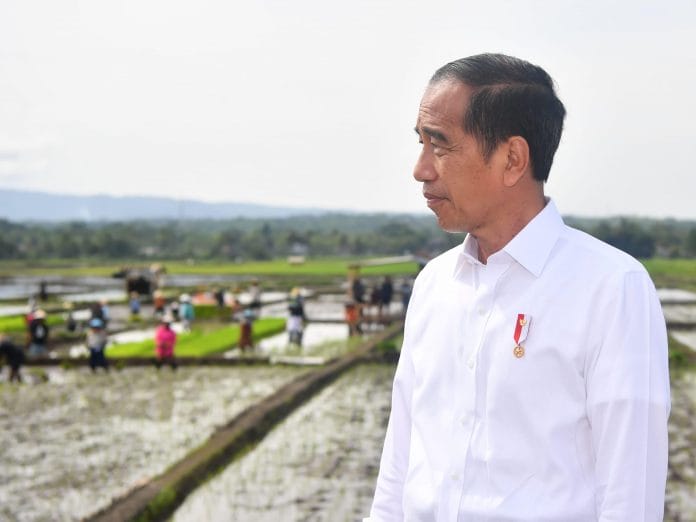Indonesia’s President, Joko Widodo will step down in Oct-24. On the 14th February 2024, Indonesian will decide its next president. This is the third-largest democracy in the world. The system of the election will be an open proportional election where voters cast their presidential votes straight away for the legislative candidates listed on the vote papers. The candidates for the next election are Prabowo Subianto (Gerindra Party), Ganjar Pranowo (Indonesian Democratic Party of Struggle) and Anies Baswedan (Nasdem Party). Whatever the outcome, Jokowi’s legacy may remain as the candidate will continue the Nusantara project.
Ganjar Pranowo and Prabowo Subianto with his running mate, Gibran Rakabuming Raka the son of the current Indonesia President have promised to maintain constructing Indonesia’s new capital city on the island of Borneo, as well as developing the downstream economy. Jokowi policies are developing the infrastructure, social welfare program and focus on the economic growth. Local investment house MIDF, believes that the post Jokowi-Era of Indonesia is crucial for Malaysia due to its geographical and economic size factors.
Surveys seems to be favouring Prabowo Subianto and Ganjar pranowo. Based on polling results by Indikator Politik Indonesia, candidates from Gerindra Party and Indonesian Democratic Party of Struggle were leading by 40.6% and 27.8%. Tight race shown in other surveys as provided by The Straits Time and Lembaga Survei Indonesia. Even though Anies received the lowest polls result, anything can happen in politics especially with millennials and Gen Z represent more than 50% of the eligible voters.
Closer ties between Malaysia and Indonesia. As guided by the Asian Free Trade Agreement (AFTA), the Malaysia Indonesia trade relationship is largely free of tariffs and non-tariff barriers. The trade relationship was further enhanced with
the tariff elimination between ASEAN-6 in 2010, which include Malaysia and Indonesia. The tariff elimination between the
ASEAN-6 marked a new free trade area, eliminating import duties for 99% of products in the inclusion list. In addition, both
Malaysia and Indonesia are members of the Regional Comprehensive Economic Partnership (RCEP), the largest FTA which
accounting for almost 30% of the global trade. These agreements allow broad market access, investment opportunities,
encourage tourism activities within the region and mutual recognition of international standards and technical regulations.
Malaysia’s direct investment in Indonesia increased steadily. Since 2015, Malaysia’s overseas investments shifted
more towards ASEAN than Europe. Direct investment in China and the US to total DIA ratio improved slightly to 2.4% (2015:
1.4%) and 4.0% in 9MCY23 (2015: 0.4%). ASEAN took a larger share from 30.2% in 2015 to 40.2% after almost a decade
. Zooming into ASEAN, Singapore and Indonesia dominate the most. As of 9MCY23, 10.8% of Malaysia’s DIA landed in
Indonesia. MIDF said it believes the DIA are invested across mining, agriculture, manufacturing and services including finance, insurance and real estate.
Roughly 15% of tourists from Indonesia. 2.2 million Indonesians visited Malaysia as of 9MCY23, 61.5% of 2019 level.
The recovery rate is way better than those of ASEAN and total tourist. Over the years, Indonesian tourists share to total
tourist arrivals rose from 3.9% in 1999 to 13.9% after 20-year. By average annual growth rate, the tourist arrival from
Indonesia grew by +4.6% per annum during 2001~2019 against total arrival increased marginally by +1.1% per annum.
After 2010 till 2019, the expansion rate much faster at +11.9% per annum by Indonesian whereas overall tourists rose by
only +5.9% per annum. The ratification of ASEAN Tourism Agreement 2002 which included visa-free for ASEAN members
and improving socioeconomic development of Indonesia were among upside factors boosting tourism activities in the region
including Malaysia.
Downstream and upstream mining products to benefit the most. In the event of Indonesia increase by +1.0,
Malaysia’s output predicted to gain among others by (i) Chemicals products, (ii) Coke & refined petroleum products, (iii)
Mining; Energy-producing products, (iv) Mining; Support services and (v) Basic Metals. The direct and indirect factors cause
the various sectors to be impacted especially with Malaysia and Indonesia involve heavily in regional supply chain of upstream and downstream of mining sector particularly oil & gas. As one of mining producing countries, Malaysia’s production and outbound shipment of mining products to benefit amid steady expansion of Indonesian economy and better recovery in China and other major Asian countries.









